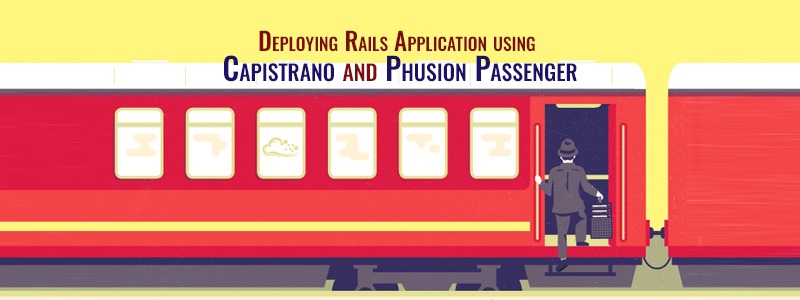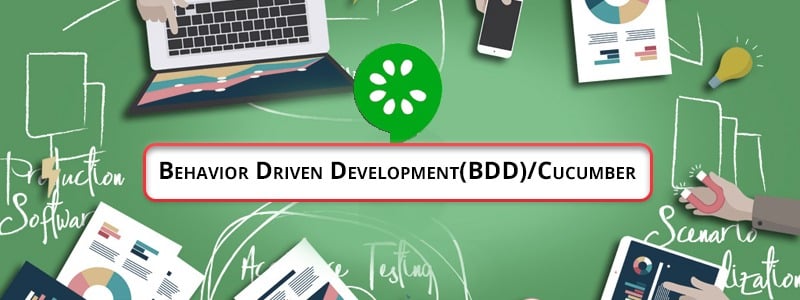Artificial Intelligence (AI) and Data Analytics are revolutionizing industries across the globe. The combination of AI-driven analytics with web development frameworks like Ruby on Rails (RoR) is unlocking new possibilities for businesses. As we enter 2025, AI and data analytics are expected to play an even bigger role in enhancing user experiences, automating processes, and making data-driven decisions within Ruby on Rails applications.
This blog explores the future of AI and Data Analytics in Ruby on Rails, discussing key trends, tools, and innovations that will shape the landscape in the coming years.
What is Data Analytics?
Data Analytics refers to the process of examining, cleaning, transforming, and interpreting data to discover useful insights, trends, and patterns that aid in decision-making. It involves using various tools, techniques, and methodologies to extract meaningful information from raw data.
Key Components of Data Analytics:
- Data Collection – Gathering data from multiple sources (databases, web, IoT devices, etc.).
- Data Cleaning & Processing – Removing inconsistencies, missing values, and errors.
- Data Analysis – Using statistical and AI-based models to interpret data.
- Data Visualization – Representing insights through charts, graphs, and dashboards.
- Decision-Making – Using analytical insights to improve business strategies.
Types of Data Analytics:
- Descriptive Analytics – Summarizes historical data to identify trends.
- Diagnostic Analytics – Analyzes past performance to determine reasons for trends.
- Predictive Analytics – Uses AI/ML to forecast future trends based on past data.
- Prescriptive Analytics – Provides recommendations for the best course of action.
Applications of Data Analytics:
- Business Intelligence – Optimizing sales, marketing, and customer engagement.
- Healthcare – Predicting diseases and improving patient care.
- Finance – Fraud detection and risk management.
- Retail & E-commerce – Personalized product recommendations.
- Manufacturing – Predictive maintenance and supply chain optimization.
What is Ruby on Rails?
Ruby on Rails (RoR) is an open-source web application framework written in the Ruby programming language. It follows the Model-View-Controller (MVC) architecture, making it easy to build scalable, maintainable, and high-performance web applications.
Key Features of Ruby on Rails:
- MVC Architecture – Separates application logic into Model (Data), View (UI), and Controller (Logic) for better organization.
- Convention over Configuration (CoC) – Reduces the need for complex setup by using sensible defaults.
- Don’t Repeat Yourself (DRY) Principle – Promotes reusability, minimizing redundant code.
- Built-in ORM (ActiveRecord) – Simplifies database interactions without writing SQL queries.
- RESTful Design – Encourages clean and structured API development.
- Gems & Plugins – Extensive library of reusable components to speed up development.
- Security Features – In-built protection against SQL injection, XSS, and CSRF attacks.
Why Use Ruby on Rails?
- Rapid Development – Write less code and build applications faster.
- Scalability & Maintainability – Ideal for startups and enterprises.
- Strong Community Support – Backed by an active open-source community.
- Cost-Effective – Open-source and reduces development time.
Popular Applications Built with Ruby on Rails:
- Airbnb – Online marketplace for rentals.
- GitHub – A platform for developers to collaborate on code.
- Shopify – Leading e-commerce platform.
- Basecamp – Project management tool.
- Hulu – Streaming service.
Why AI and Data Analytics Matter in Ruby on Rails?
Ruby on Rails, known for its simplicity, efficiency, and scalability, has been a top choice for developers building modern web applications. With the rise of AI and data analytics, integrating these technologies into RoR applications can offer intelligent automation, predictive analytics, and enhanced decision-making capabilities.
Key Benefits of AI and Data Analytics in RoR Applications:
- Personalization: AI-driven algorithms enhance user experiences by offering personalized content and recommendations.
- Automation: AI automates repetitive tasks such as data entry, chatbots, and customer interactions.
- Predictive Analytics: Machine learning models help businesses anticipate user behavior and make proactive decisions.
- Enhanced Security: AI-powered fraud detection and anomaly detection improve cybersecurity in RoR applications.
- Optimized Performance: AI algorithms help optimize application performance through automated debugging and system monitoring.
AI and Data Analytics Trends in Ruby on Rails
As we move into 2025, several emerging AI and analytics trends are influencing RoR applications. Let’s explore the most significant ones:
1. AI-Powered Chatbots and Virtual Assistants
- Many RoR applications are integrating AI-driven chatbots to handle customer interactions efficiently.
- Natural Language Processing (NLP) allows chatbots to understand and respond to user queries more naturally.
- Example: Implementing AI-driven chatbots in RoR-based e-commerce applications for real-time customer support.
2. Predictive Analytics for Business Intelligence
- AI models analyze user behavior and provide predictive insights to businesses.
- Ruby on Rails apps in sectors like healthcare, finance, and retail benefit from AI-driven business intelligence.
- Example: A Rails-based inventory management system utilizing predictive analytics to optimize stock levels.
3. Machine Learning Integration
- Developers are integrating ML models into RoR applications using APIs and AI libraries.
- Example: A Ruby on Rails real estate platform that predicts property prices based on market trends.
4. AI-Enhanced Security and Fraud Detection
- AI algorithms identify and prevent fraudulent activities in RoR applications.
- Example: AI-powered fraud detection in RoR-based financial platforms analyzing transaction patterns.
5. Automated Data Processing and ETL Pipelines
- AI-driven ETL (Extract, Transform, Load) pipelines are automating data processing in RoR applications.
- Example: A Ruby on Rails application automatically extracting and analyzing customer feedback from multiple sources.
How to Implement AI and Data Analytics in Ruby on Rails
AI and data analytics can be seamlessly integrated into Ruby on Rails applications using various libraries, tools, and APIs. Below are the best approaches:
1. Using Ruby AI Libraries
Several Ruby-based libraries support AI and machine learning integration:
- TensorFlow.rb – A Ruby binding for TensorFlow, enabling deep learning applications.
- Scoruby – A library for running predictive models within Ruby applications.
- PredictionIO – A machine learning server that can be integrated into RoR applications.
2. Leveraging AI APIs in RoR Applications
Many AI services provide APIs that can be used in Ruby on Rails applications:
- Google Cloud AI – For NLP, vision, and speech recognition.
- IBM Watson – AI-driven analytics and chatbot capabilities.
- Amazon SageMaker – For machine learning model deployment.
3. Data Analytics and Visualization in RoR
For AI-driven insights, developers can integrate data analytics tools into Rails applications:
- Pandas (via PyCall) – Python-based data analysis tool used within RoR apps.
- Daru (Data Analysis in RUby) – A native Ruby library for data manipulation.
- Chartkick & D3.js – For real-time data visualization in RoR applications.
4. Using AI Frameworks with Ruby on Rails
Developers can integrate Python-based AI frameworks like PyTorch or Scikit-learn into RoR applications using REST APIs or background processing tools like Sidekiq.
Challenges and Considerations
While integrating AI and data analytics into Ruby on Rails applications offers numerous benefits, there are also challenges to address:
1. Performance and Scalability
- AI computations are resource-intensive and may slow down RoR applications.
- Solution: Use background processing (Sidekiq) or deploy AI models on cloud services (AWS, Google Cloud, etc.).
2. Data Privacy and Security
- Handling user data for AI analytics raises privacy concerns.
- Solution: Ensure data encryption, GDPR compliance, and secure AI model deployment.
3. Integration Complexity
- AI models often require extensive data processing, which can be complex to implement in RoR.
- Solution: Use AI APIs instead of developing in-house models.
4. Cost Implications
- AI infrastructure and cloud computing services can be costly.
- Solution: Optimize resource usage and explore serverless AI options.
The Future of AI and Data Analytics in Ruby on Rails
Looking ahead, the combination of AI, data analytics, and Ruby on Rails is expected to evolve further, leading to groundbreaking innovations:
1. AI-Driven Development Assistants
- AI tools that assist Rails developers by auto-generating code, detecting bugs, and suggesting improvements.
2. Smart Content Management Systems (CMS)
- AI-powered CMS that automatically categorizes, tags, and optimizes content based on user behavior.
3. AI-Based Automated Testing
- Machine learning models predicting potential application failures and automating test cases in RoR apps.
4. Hyper-Personalization in Web Applications
- AI-driven user profiling that customizes UI, product recommendations, and notifications dynamically.
5. Voice and Image Recognition in RoR Apps
- AI-powered speech-to-text and image recognition capabilities integrated into Rails applications.
Conclusion
As we approach 2025, AI and Data Analytics will continue to shape the future of Ruby on Rails development. Businesses leveraging these technologies will gain a competitive edge by offering smart, automated, and data-driven solutions.
For RailsCarma, embracing AI-powered solutions can drive innovation and efficiency in web application development. Whether through intelligent chatbots, predictive analytics, or AI-driven automation, the possibilities are endless.
By integrating AI and analytics effectively, Ruby on Rails applications will not only become smarter but also more efficient, scalable, and user-friendly in the years ahead. 🚀
Would you like to explore custom AI integration for your RoR project? Let’s discuss how RailsCarma can help!
Frequently Asked Questions
1. How is AI transforming Ruby on Rails applications?
AI is revolutionizing Ruby on Rails by enabling personalized user experiences, predictive analytics, AI-powered chatbots, and automation. It helps businesses enhance security, optimize application performance, and provide intelligent data-driven insights for better decision-making.
2. What are the best AI tools for integrating with Ruby on Rails?
Some of the best AI tools and APIs for RoR integration include:
- Google Cloud AI (for machine learning, NLP, and image recognition)
- IBM Watson AI (for intelligent automation and analytics)
- Amazon SageMaker (for AI model deployment)
- TensorFlow.rb (for deep learning applications)
- Scoruby & PredictionIO (for predictive analytics in Ruby apps)
3. What challenges do businesses face when integrating AI with Ruby on Rails?
Key challenges include performance scalability, data privacy concerns, integration complexity, and high infrastructure costs. Solutions involve leveraging cloud-based AI services, optimizing server performance, and ensuring regulatory compliance (e.g., GDPR, data encryption).
4. How can businesses leverage data analytics in Ruby on Rails applications?
Businesses can use data analytics in RoR applications to:
- Analyze customer behavior and provide personalized recommendations
- Detect fraud and security threats using AI-powered anomaly detection
- Improve business intelligence and reporting with data visualization tools like Chartkick & D3.js
- Automate ETL (Extract, Transform, Load) processes for real-time insights
5. What is the future of AI and data analytics in Ruby on Rails?
By 2025, AI-powered development assistants, automated testing, hyper-personalization, voice/image recognition, and AI-driven CMS solutions will become mainstream in RoR applications. The adoption of AI-based automation and smart analytics will make web applications more intelligent, scalable, and efficient for businesses.





